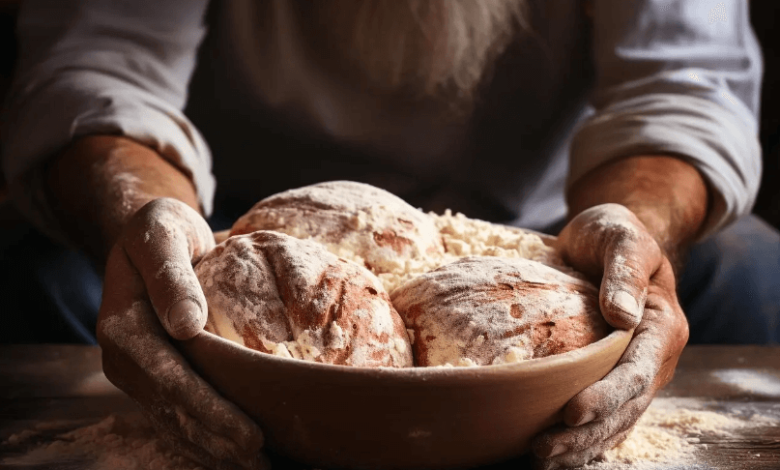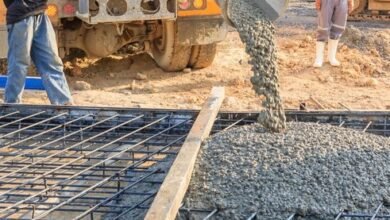Why Self Rising Flour is the Secret Ingredient Every Baker Should Know

When it comes to baking, the right ingredients are key to achieving that perfect texture, flavor, and rise in your baked goods. However, for both novice and seasoned bakers, the array of flour types available can often be confusing. Among the most underrated and often overlooked flours is self rising flour. While it may seem like a simple convenience product, self rising flour is, in fact, a secret ingredient that can elevate your baking game. In this article, we’ll explore why self rising flour should be in every baker’s pantry, and how it can simplify the baking process while enhancing your recipes.
What is Self Rising Flour?
At its core, self rising flour is simply a mixture of all-purpose flour, baking powder, and salt. While regular all-purpose flour requires the addition of a leavening agent (like baking powder or yeast) for baked goods to rise, self rising flour already contains these elements. The ratio of ingredients is typically standardized, with about 1 ½ teaspoons of baking powder and ½ teaspoon of salt added to each cup of flour.
This clever combination of ingredients makes self rising flour a go-to option for recipes that call for quick breads, cakes, biscuits, and even some savory dishes. By including the leavening agents directly in the flour, it saves you a step in the kitchen and ensures consistent results.
The Science Behind Self Rising Flour
Understanding the role of each component in self rising flour is essential to appreciating its usefulness. To begin, let’s break it down:
- All-purpose flour: This is the base ingredient, providing structure and texture to your baked goods. It has a moderate protein content, usually around 10-12%, which makes it versatile for many types of baking.
- Baking powder: This is a leavening agent that helps doughs and batters rise. It contains an acid (usually cream of tartar) and a base (baking soda), which react when combined with moisture and heat to produce carbon dioxide bubbles. These bubbles are what cause the dough to expand and become light and airy.
- Salt: While salt doesn’t directly affect the rising process, it’s important for flavor enhancement. It balances the sweetness of cakes or breads and helps the baking powder work more effectively.
The genius of self rising flour is that these three ingredients are already proportioned for you, making it simpler to create the right chemical reaction without having to think about ratios or measurements.
The Convenience Factor: Less Time, Fewer Steps
One of the most obvious reasons bakers love self rising flour is the convenience factor. In traditional baking, measuring out separate ingredients like flour, baking powder, and salt can be time-consuming, and there’s always the risk of miscalculating or missing an ingredient. Self rising flour removes that uncertainty by already containing the right amounts of leavening agents.
Imagine you’re in the middle of making a batch of fluffy biscuits or a moist cake, and you realize you’ve run out of baking powder or forgot to add the salt. With self rising flour, this problem is solved, as you already have all the components mixed together. For home bakers who aren’t quite as confident with ingredient proportions, self rising flour offers a foolproof option that guarantees better results.
Additionally, because self rising flour can often be used as a one-to-one substitute for all-purpose flour in many recipes, you don’t have to worry about complicated adjustments. For instance, if a recipe calls for 2 cups of all-purpose flour, you can simply use 2 cups of self rising flour, leaving out the baking powder and salt, as they’re already included.
Consistency and Reliability in Baking
Consistency is one of the most important factors in baking, especially when you want to replicate a recipe multiple times with the same results. Using self rising flour ensures that the proportion of leavening agents is consistent from batch to batch, which can sometimes be a challenge when you mix your own flour and baking powder. Over time, baking powder can lose its potency, or you might inadvertently add too much or too little, affecting the final product.
With self rising flour, you know that the leavening agents are already integrated into the flour at a precise level, ensuring that your dough or batter will rise consistently every time you bake. This is particularly crucial for delicate baked goods like cakes, muffins, and biscuits, where a perfect rise is key to achieving the right texture.
Self Rising Flour in Different Baked Goods
Self rising flour shines in a variety of baking scenarios. Here’s a breakdown of how it works in different types of baked goods and why it’s a must-have ingredient for each:
- Biscuits and Scones
One of the best uses for self rising flour is in biscuits or scones. These types of baked goods rely on a quick rise and tender crumb, and self rising flour helps achieve that perfect lift and lightness. Since baking powder is already incorporated into the flour, your biscuits will rise without any additional effort on your part. - Cakes and Cupcakes
When baking cakes and cupcakes, the texture is paramount. You want a soft, fluffy crumb that’s not too dense. Self rising flour, with its leavening agents built-in, makes it easier to achieve a light, airy texture without the risk of under- or over-leavening. It also ensures that the cake rises evenly, preventing any sinking in the middle. - Pancakes and Waffles
Pancakes and waffles are a breakfast favorite, but getting the right fluffiness can be tricky. Self rising flour can make pancakes and waffles thicker and fluffier with less hassle, as it already has the right leavening to provide that sought-after rise. - Quick Breads
Quick breads, like banana bread or cornbread, are often baked with the help of baking soda or baking powder. Using self rising flour in these recipes removes the need to measure out additional leavening agents, simplifying the process while ensuring your loaf has a soft texture and a good rise. - Savory Baked Goods
It’s not just sweet baked goods that benefit from self rising flour. Savory biscuits, cornbread, and even pizza dough can be made with self rising flour for a light, airy texture. The salt in the self rising flour also helps to season these savory items, giving them a balanced flavor.
Substituting Self Rising Flour
While self rising flour is incredibly convenient, there are times when you may not have it on hand or don’t want to use it for a particular recipe. Fortunately, it’s easy to create a homemade version by combining all-purpose flour with baking powder and salt. The ratio is simple:
- For 1 cup of self rising flour, mix 1 cup of all-purpose flour, 1 ½ teaspoons of baking powder, and ½ teaspoon of salt.
This substitute works in most recipes that call for self rising flour, though you’ll need to keep in mind that the results may not be identical, as commercially produced self rising flour is often made with a specific blend of ingredients that can be hard to replicate perfectly at home.
Is Self Rising Flour for Everyone?
While self rising flour is incredibly versatile, it’s not for every recipe. Certain baked goods—particularly those that require a specific texture or rise, like yeast bread—need more control over the amount of leavening used. For these, using all-purpose flour is a better choice. Additionally, if you’re on a specialized diet (gluten-free, low-sodium, etc.), self rising flour may not meet your needs. In such cases, you can find gluten-free self rising flour blends or create a customized mixture.
Conclusion: A Baker’s Secret Weapon
Self rising flour is far more than a time-saving convenience. It’s a versatile, reliable, and consistent ingredient that simplifies the baking process while delivering top-notch results. Whether you’re baking biscuits, cakes, pancakes, or even savory dishes, having self rising flour in your pantry means you can always achieve a perfect rise without the hassle of measuring out multiple ingredients.
For both novice and experienced bakers, self rising flour is a secret ingredient worth knowing—and using—time and time again. By eliminating the need for separate leavening agents and ensuring consistent results, self rising flour makes it easier than ever to bake like a pro. So, the next time you’re in the kitchen, reach for that bag of self rising flour—it just might become your new secret weapon in the world of baking.




